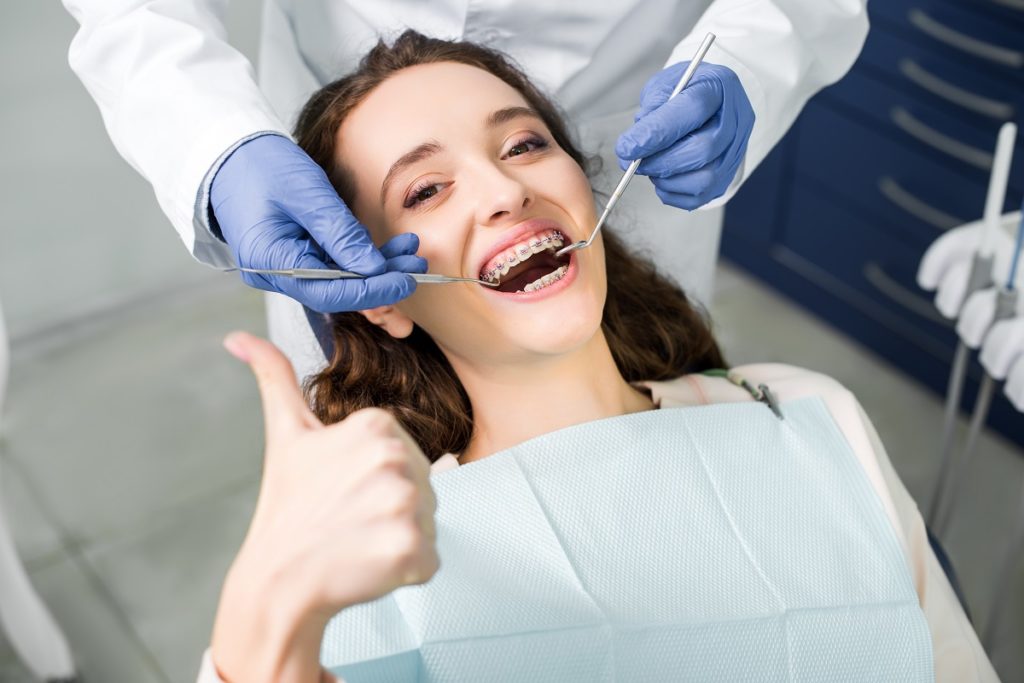For some people, getting and holding on to braces can be a terrifying experience. Knowing precisely what is going to happen and how to deal with it is an excellent way to lessen some of the anxiety and make sure you are ready for your new braces.
It is essential to realize that everyone will have a different experience depending on their orthodontist and their specific treatment. For those who choose Invisalign instead of traditional braces, this experience can be quite different because the number of trays gets less than the cost of getting the brackets and wires.
Never fear! We have a complete guide to getting the braces.
Referrals
The first step is to refer to the Newport Beach dentist because more people go to the dentist regularly instead of going to an orthodontist.
The dentist usually monitors the patient’s teeth and advises them to see an orthodontist. However, you can make your appointment at any time by directly calling the office and requesting a meeting with the orthodontist. Bringing the latest X-rays from your dentist and any doubts about your teeth may help.
Consultation
Your first meeting with the Newport Beach dentist will be consultation. He will look at your teeth, determine what needs to be done to correct your teeth, or you can even benefit from orthodontic treatment.
Although many people will benefit from straight teeth, in some cases, one’s teeth are straight enough, and the braces are unnecessary. The orthodontist will monitor teeth and your X-ray and determine the best course of action. During this meeting, he can also make dental molds to design your treatment plan better.
Design treatment
The orthodontist will create a treatment plan according to specific needs after the consultation.
Not everyone has an outside or underbite; not everyone’s teeth have gaps or overcrowding teeth. Each case varies, and treatment must be specific to the individual to work correctly. The orthodontist will monitor your teeth problem and he will create a model for the braces.
Place the bracket
This initial meeting will take more time than any future appointment. It involves adjusting the surface of the tooth, providing the location of the adhesive on the carrier, holding the bracket in place, and placing the first wire.
After cleaning, conditioning may take 10 to 30 minutes. The teeth are then cemented, and the brackets are placed according to a predetermined position designed by the orthodontist.
Insert the wire
Once the bracket is in place, the wire should be inserted into the bracket.
The orthodontist starts with a semi-circular line, cuts it to the appropriate length, and sometimes bends or kinks into the wire to form some force on the tooth, which will help them move to the correct position faster. Then place the wire in the bracket and then the doors are closed to secure it in place.
Discussion of oral care
Although the orthodontist may consider some of the basics of braces care during the consultation process, he may inquire into how you brush your teeth, what kind of toothpaste you use, or if he can even recommend a special toothbrush to clean your teeth.
Cleaning your teeth and brackets is not the same after putting on braces, and small spindle brushes are recommended and can help remove food particles and bacteria around the brackets and between the wires and the teeth.
Adjustment
After placing the wire, it usually takes three to four weeks before the next adjustment. During the modification, the orthodontist removes the wire, bends or inserts the new wire again, generally using the old cable as a guide.
To continue moving the teeth, the new wire will be slightly stronger or have a different configuration than the last wire. Each time an adjustment is made, the dentist inserts a somewhat different wire to pull or push the tooth in some way.
Dentist appointment
It is essential to keep a dentist’s appointment while you are wearing braces. The dentist can help keep the teeth clean as it can be challenging to brush your teeth.
Brackets and wires make it difficult to reach your teeth, but dentists and hygienists have received training for cleaning around brackets and can provide guidance to help you clean more effectively.
Dietary restrictions
Some dietary restrictions will accompany braces. These are very important. In general, dentists will tell you to avoid sticky and crunchy foods, as well as hard fruits like apples.
Although a small piece of hard food may not be a problem, anything that requires you to bite hard can cause the stand to pop out. While these limitations don’t seem to be necessary, they are designed to make sure your braces are as smooth and work as fast as possible.
The treatment will be different for everyone, but the process of correcting and caring for them is usually the same. During this time, you must follow the dentist’s instructions and properly care for your teeth.
The braces can improve your oral health, but to work props properly, you must prepare yourself for proper cleaning and care. Visit Newport Beach dentist on a regular basis to ensure you have the best oral health.
